
How to Find Probability of Complement Events YouTube
The complement of the event A is denoted by AC. The complement of A is the set of all elements in the universal set, or sample space S, that are not elements of the set A . The complement rule is expressed by the following equation: P ( AC) = 1 - P ( A ) Here we see that the probability of an event and the probability of its complement must.

Prove that Probability of the Complement of A is One Minus the Probability of A YouTube
Rather than listing all the possibilities, we can use the Complement Rule. Because we have already found the probability of the complement of this event, we can simply subtract that probability from 1 to find the probability that the sum of the numbers rolled is greater than 3. P (E′)= 1−P (E) =1− 1 12 = 11 12 P ( E ′) = 1 − P ( E.
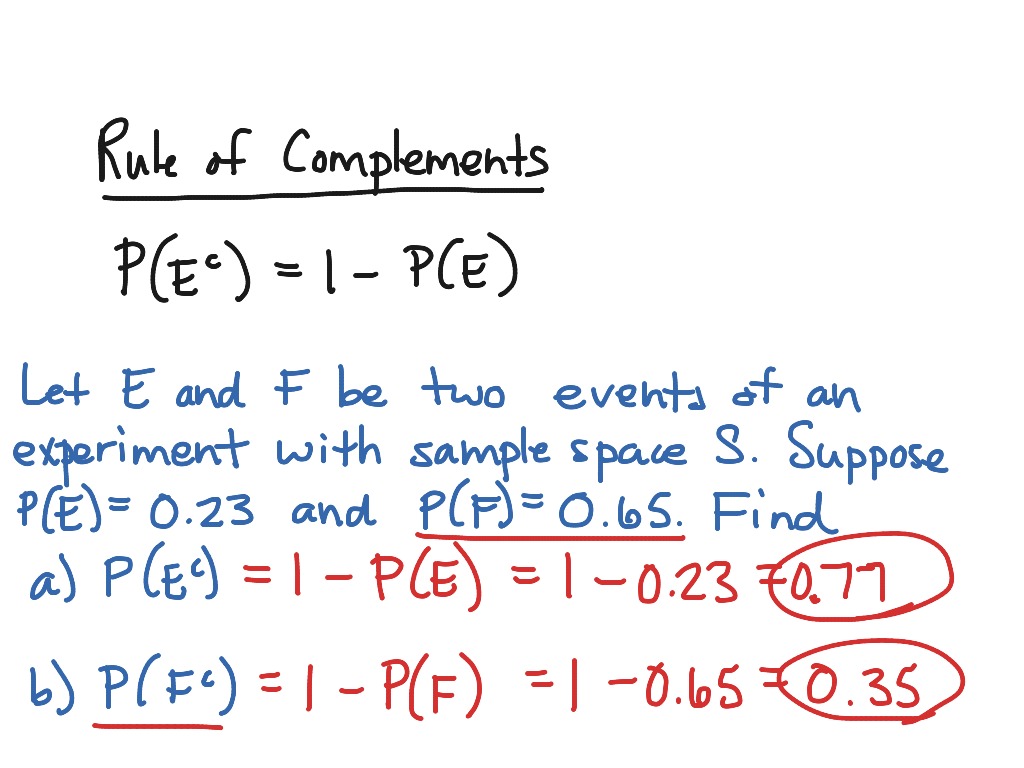
Rule of Complements in Probability Math ShowMe
Complement of an Event. The complement of an event E E is the event " E E doesn't happen". The notation E¯ E ¯ is used for the complement of event E E. We can compute the probability of the complement using P(E¯) = 1 − P(E) P ( E ¯) = 1 − P ( E) Notice also that P(E) = 1 − P(E¯) P ( E) = 1 − P ( E ¯) Example 1.

Question Video Determining the Probability of Complement of a Given Event Nagwa
The complement rule is stated as "the sum of the probability of an event and the probability of its complement is equal to 1," as expressed by the following equation: P ( AC) = 1 - P ( A ) The following example will show how to use the complement rule. It will become evident that this theorem will both speed up and simplify probability.

Complement Rule (Probability) YouTube
We can use the probability of the complement to find the probability of the event by subtracting it from one. This trick is often used when calculating the probability of multiple events. The Probability of the Complement of an Event This video provides two basic examples of how to find the complement of an event.
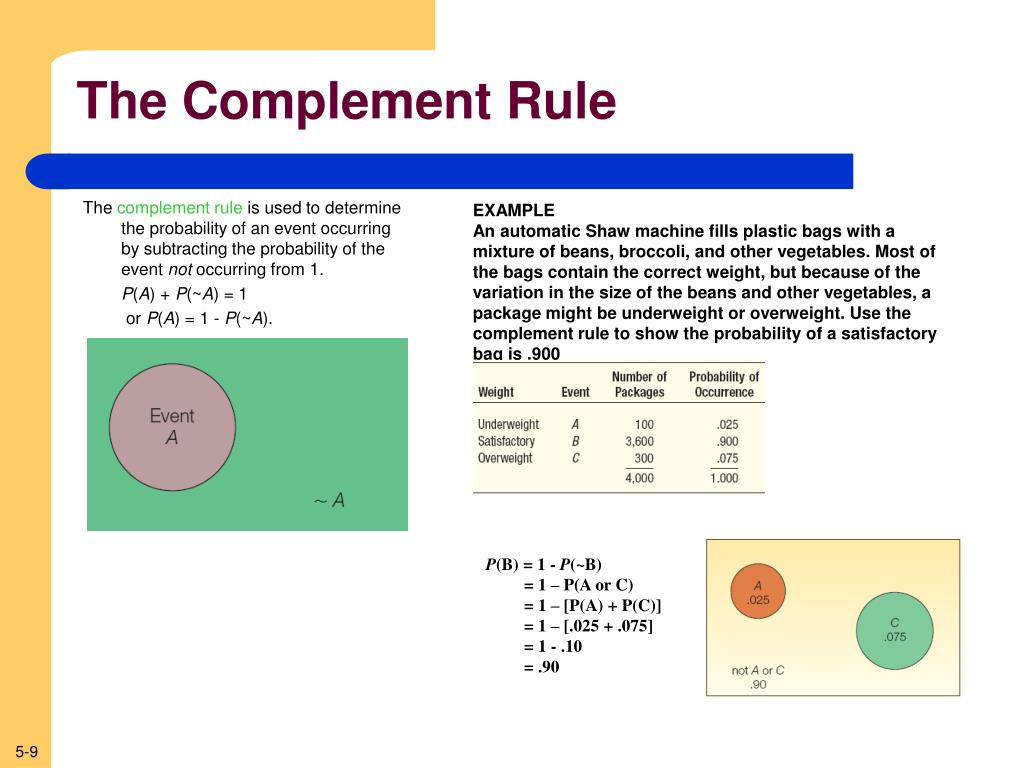
PPT A Survey of Probability Concepts PowerPoint Presentation ID314183
An example of an "at most" event is supposing you want to find the probability of rolling a die and getting at most a 4. That means that you want to get less than or equal to a 4 on the die, a 1, 2, 3, or 4. The reason to use the complement is that sometimes it is easier to find the probability of the complement and then subtract from 1.

Ex Find the Probability of a Complement Using a Table YouTube
The probability of an event that is a complement or union of events of known probability can be computed using formulas. This page titled 3.2: Complements, Intersections, and Unions is shared under a CC BY-NC-SA 3.0 license and was authored, remixed, and/or curated by Anonymous via source content that was edited to the style and standards of.

Question Video Determining the Probability of the Complement of a Given Event Nagwa
The probability of an event that is a complement or union of events of known probability can be computed using formulas. 5.2: Complements, Intersections, and Unions is shared under a CC BY-NC-SA license and was authored, remixed, and/or curated by LibreTexts.

Probability The Rule of Complementary Events YouTube
The complement of an event is a list of all the ways that event doesn't happen. So, it's the list of all outcomes of an experiment that do not form part of that event. Let's look at some examples. Examples If the event is { Green }, the complement is { Red }.
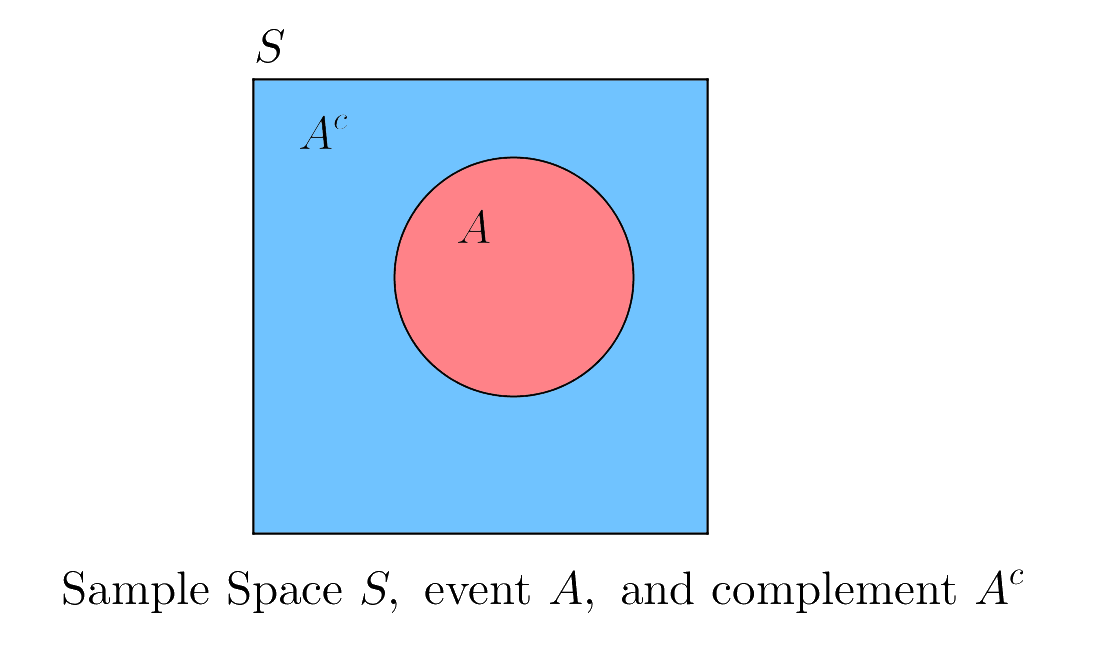
Probability By Complement Brilliant Math & Science Wiki
The complement rule works off of the idea that two parts make a whole. In probability, the "whole" refers to all possible outcomes. I find it's easiest to think of this as being 100%, which we know as a decimal value is simply 1. Thus, the sum of the probabilities of all possible outcomes must equal 1. There are a few situations where this rule.
:max_bytes(150000):strip_icc()/complement-56a8fa9a5f9b58b7d0f6e9e7.jpg)
How to Prove the Complement Rule in Probability
The Probability of taking the place of one event if and only if the other event does not occur, then we say that the two occurrences are complementary. Furthermore, the outcomes in which the event in question does not occur might be considered its complement. Take A to be happening. For the opposite of A, write A' or Ac.
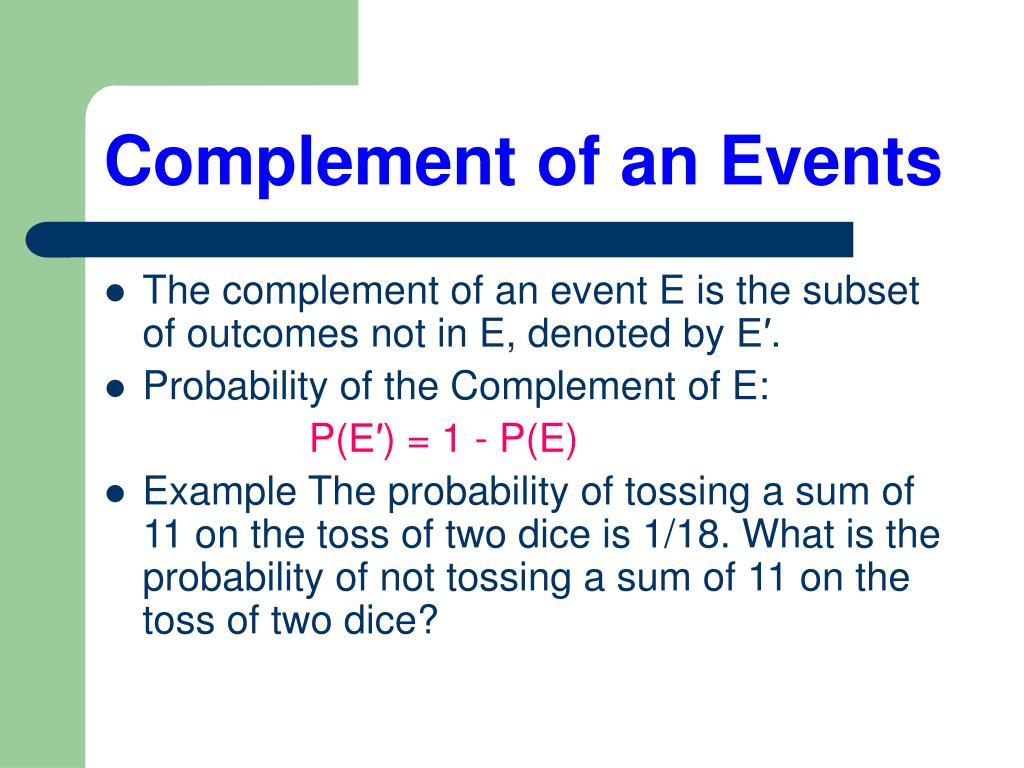
PPT Section 11.4 Addition and Complement Rule PowerPoint Presentation ID256590
Probability of a Complement Formula: To find the probability of the complement of an event, we simply subtract the probability of the event happening from 1. That is, P ( Complement of an.
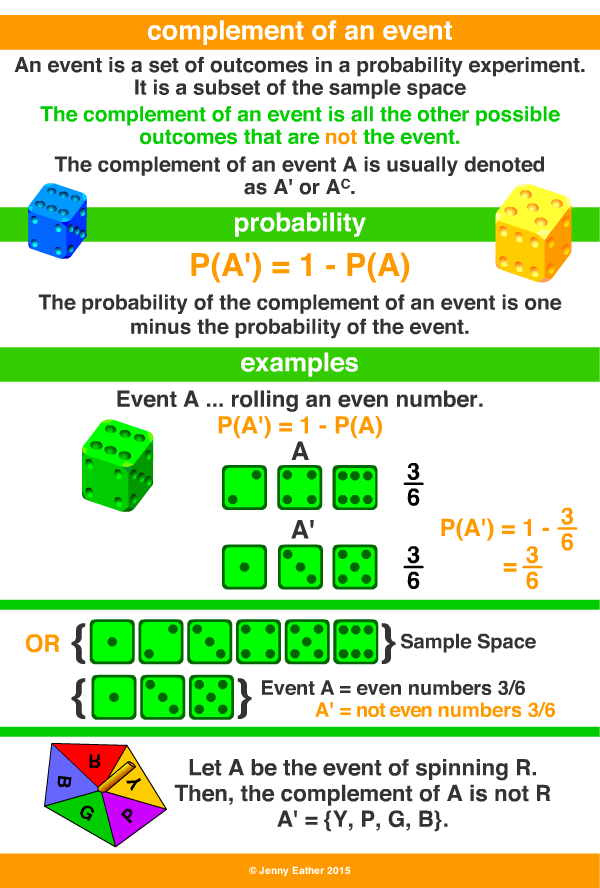
complement of an event A Maths Dictionary for Kids Quick Reference by Jenny Eather
Definition of Complement (probability) more. The Complement of an event is all outcomes that are not the event. Example: For dice, when the event is {5, 6} the complement is {1, 2, 3, 4} The symbol is a little dash in the top-right corner Example: A' = {1, 2, 3, 4} Together the event and its complement make all possible outcomes.

What Are Complementary Events In Probability Statistics, Definition And Formula YouTube
What is the probability that a customer spends at most $100 per transaction? Solution: Spending at most $100 ($100 or less) per transaction is the complement of spending more than $100 per transaction.

Probability of Complementary Events & Sample Space YouTube
Index: The Book of Statistical Proofs General Theorems Probability theory Probability axioms Probability of the complement . Theorem: The probability of a complement of a set is one minus the probability of this set: \[\label{eq:prob-comp} P(A^\mathrm{c}) = 1 - P(A)\]
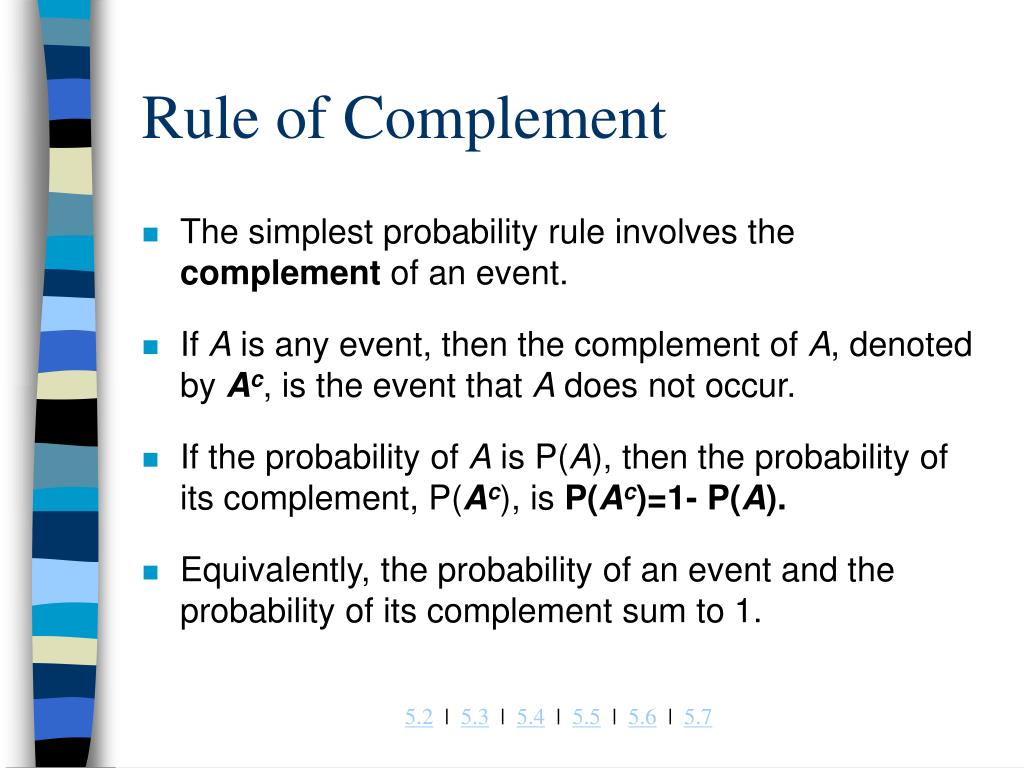
PPT Probability Essentials PowerPoint Presentation, free download ID483038
1. Suppose you know that the probability of getting the flu this winter is 0.43. What is the probability that you will not get the flu? Let the event A be getting the flu this winter. We are given P ( A) = 0.43. The event not getting the flu is A ′. Thus, P ( A ′) = 1 − P ( A) = 1 − 0.43 = 0.57. 2. Two coins are tossed simultaneously.